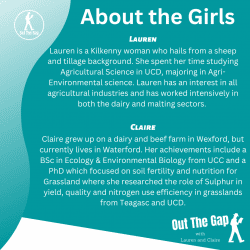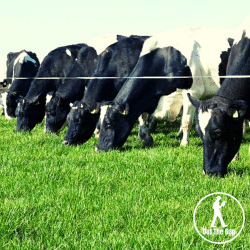Out The Gap – Issue 5


Silage & Grass Quality
While putting the finishing touches to this article which was prepared in the second week of May, it became clear that the content may not be applicable for every farm. While having a cup of coffee with Lauren, an email popped up from the Teagasc Grass 10 team which showed DM of 22%. With no rain on the horizon, my next step was to have a look at the Met Eireann website which showed Soil Moisture Deficits from 50-70mm in the South East, East and South West of the country. The frequency of people suggesting that a drop of rain would “do no harm” has increased significantly. Everyone’s phone in Grassland Agro has also got a lot busier with the same question, “Should I spread?” The simple answer is no, not if it’s dry. When rain is forecast there will also be a significant increase in nitrogen (N) mineralised from the soil reserve so there is no need to rush out. An application of Potash (K) could be beneficial. Grassland farmers will quickly need to come up with strategies on how to manage grassland in drought conditions. If we didn’t or don’t capitalise on our peak growing months, we could potentially miss that window and have reduced forage for the coming winter. That K application often gets forgotten about but is essential to help increase drought tolerance and slow down the effects that follow such extremes.
A colleague of ours here at Grassland Agro, John O’Loughlin, would argue that The only fertiliser that should be spread during the drought is Lime. Those of you that know him may immediately disagree with him just out of satisfaction, but on this one, he could have a point! Applying to areas that are dryer, firmer and accessible now are ideal. Post grazing or silage ground where covers are low and a reduced interference with N or slurry application, makes spreading lime favourable.
Unfortunately, farmers are supposed to be experts in all fields but there’s no better way of keeping in touch with what’s going on in terms of grass growth than taking a walk through your paddocks. This is more than just a walk, it’s an information gathering process designed to support good grassland management.
As we in head into June, it’s all about monitoring grass cover, herd rotation and potential fertilisation. The focus is now on maintaining grass quality in order to maximise the amount of leaf in the sward. Not an easy job to say the least, especially when both cow and man start to become that little bit… sluggish. Above we mentioned growth rates and DM but understanding the reasoning behind the ‘Why?’, why do I need to walk my farm ? Well, lower quality swards will have a greater stem: leaf ratio and are therefore less digestible. This could mean up to a 5% drop in milk solids for a dairy farmer, so it’s worth staying on top of it.
The current/impending drought makes it even more important to measure grass growth. As growth rates drop the rotation length needs to increase to 20-25 day round at a growth rate of 50 kg DM/ha day will give a pre-grazing yield of 1250kg DM/ha. Another thing which is very important is that as DM increases we need to recalibrate our eyes. Visually lower covers of grass will have higher available feed due to higher DM.

The grazing goal is to graze cover 1300 -1400 kg DM/ha to optimise profit from grazing. It would be suggested taking these for bales as soon as you can rather than letting them grow on for a couple of weeks for three reasons:
- If high cover paddocks (e.g. 3000 kg DM/ha) are cut, you will have better quality silage
- Once harvested, that paddock is back growing again giving options in three weeks, back into the rotation
- Paddocks left to bulk up when harvested will be paler in the base with a lot more stem, this will slow down the regrowth
With good weather on the forecast, many farmers have used the opportunity to harvest the first cut silage in good conditions. The focus will then shift to a second cut, especially as many farms need to build fodder stock. A lot of fodder was used over the long winter and wet spring. Therefore, fodder stocks are low on many farms. These extreme weather conditions are likely to continue and increase in frequency, whether that be a drought in the summer or wetter on the shoulders of the growing season. Recently, the World Meteorological Organisation announced that there is a 98% likelihood that at least one of the next five years will be the warmest on record. Weather is a major factors affecting Irish farm production and the mental health of the farmers. Drought during the summer months leads to reduced grass growth, fodder and water shortages, all adding to the stress on farm. Therefore, it is important as ever to take all opportunity to build fodder stock whether that is taking the extra grass growth from grazing platform or maintaining/build soil fertility and improving soil health. It is also important to make good quality silage to decrease imported feed. Grass silage accounts for a large portion of an animals feed on the majority of Irish farms and the quality will have an significant impact.
Remember folks, grass grows grass so utilise it while we can.

